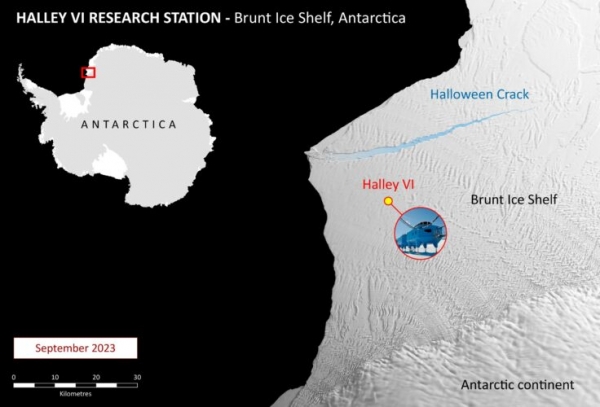Following the calving of the A-81 iceberg at the end of January 2023, the Brunt Ice Shelf is moving faster than before. It is currently moving approximately 4 metres a day towards the sea, whereas before the calving it moved at an average of between 1-2.5 metres a day. The observations have been submitted this week to the journal The Cryosphere.
The Brunt Ice Shelf is one of the most studied ice shelves in the world. Its glaciological structure is complex, and the impact of calving events is often unpredictable. Researchers consider that climate change has not played a significant role in the recent acceleration of the Brunt Ice Shelf. It has accelerated due to the loss of its connection with the seafloor in an area known as the McDonald Ice Rumples, following the calving of the A-81 iceberg. This connection helped stabilise the ice shelf for most of the last 67 years since it was first occupied and instrumented. The ice shelf is now moving at a rate usually only measured on ice shelves fed by exceptionally fast flowing outlet glaciers such as Thwaites Glacier in West Antarctica.
Scientists at British Antarctic Survey (BAS) are closely monitoring the situation using GPS equipment deployed on the ice and satellite data. The monitoring data are used to aid operational planning at Halley Research Station, which is situated on the most stable part of the Brunt Ice Shelf, 20 km from the new ice front. In 2016, BAS took the precaution of relocating Halley Research Station 23 km inland of the fissure (Chasm-1) that eventually caused the calving of the A-81 iceberg, after it began to widen.
Read more at British Antarctic Survey
Image: Scientists at British Antarctic Survey (BAS) are closely monitoring the situation using GPS equipment deployed on the ice and satellite data. (Credit: British Antarctic Survey)


